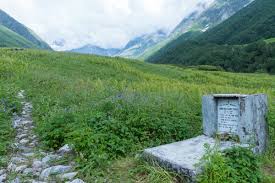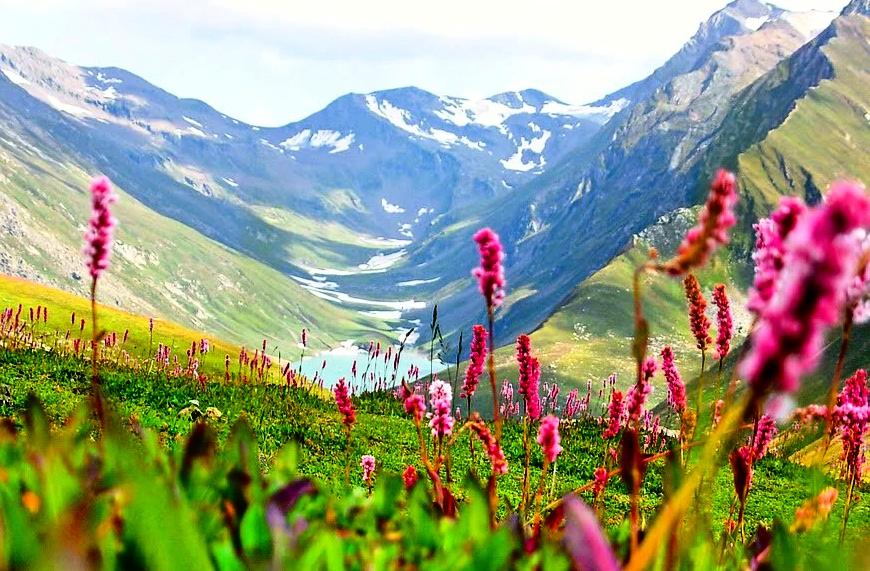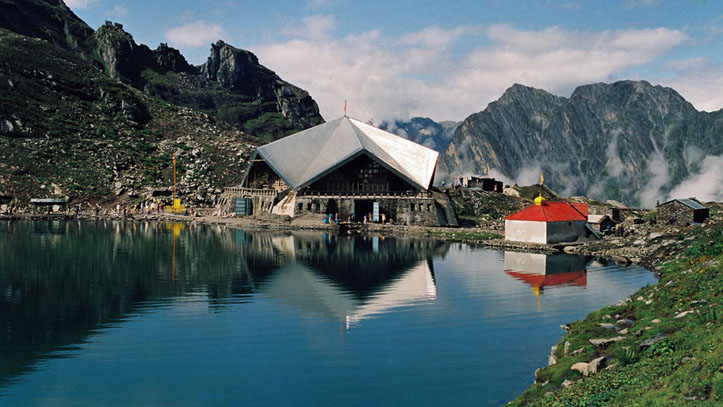An Enchanting Hike Along the Valley of Flowers
The Valley of Flowers is an Indian national park, located in the midst of Uttarakhand. It is renowned for its wide array of flora and its meadows of endemic alpine flowers. The national park also has a wide range of fauna and is home to numerous endangered species of birds. The heavy monsoons and moderate temperatures help create the perfect conditions for the survival and proliferation of these species, making the valley a surreal sight for tourists. The park falls under the purview of the Nanda Devi Biosphere Reserve as is well kept and open to visitors.
The Valley was once a mountaineering track, but due to years of degradation, was later closed off to trekkers. The current routes overlook the Valley and offer beautiful views to enthusiasts wishing to hike along the track to experience the lush fauna of this region. If you’re a nature lover and are looking for an experience that will prove memorable, this is your chance! Here is all the information you need to plan a trip to this serene and breathtaking Indian location.
History of the Valley of Flowers
The Valley of Flowers lies in the Pushpavati Valley, discovered in 1862 by Colonel Edmund Smyth. It was located at a high altitude and hence lay unexplored and unknown till some mountaineers discovered it accidentally while returning from an expedition. It was then incorporated under the Nanda Devi Biosphere Reserve by Government mandate.
In 1939, a botanist named Joanne Legge lost her life when conducting research on the flora in the Valley, and a memorial was constructed on the spot of her death in memory of her. The park is currently under the Uttarakhand Forestry Department and is open to tourists from June to October, as the rest of the months usually experience snowfall and can be slippery and dangerous for outsiders.
Treks along and to the Valley of Flowers
Tourists often here tales about trekkers falling into a deadly swoon owing to the poisonous smells of some of the species of flowers in the Valley. However exaggerated, the tales do convey the truth of the beautiful odours that surround the Valley. The short window from July to August is the peak trekking season as it sees minimum rainfall and maximum day cover in the year.
The trek to the Valley usually begins at a small pilgrim hamlet named Govind Ghat, located beyond Joshimath. Trekkers usually leave for Govind Ghat from Haridwar or Rishikesh and begin their trek to Ghangria from Govind Ghat. The ascent is a gradual one, rising up to 10000 feet, and adjoining the River Alakananda. The Valley is a 3-kilometre climb from Ghangria; the trekkers cross a bridge across the Lakshman Ganga, a river that originates at the Hemkund Lake. The path goes downwards from there and the Valley begins at the very end.
The Expanses of the Valley
The Valley possesses hundreds of thousands of species of flowers, and travellers may find themselves knee deep in the flora at points. Masses of tall and short flowers, mosses, low ground flowers and even species of berries flood the area. One must be careful to stay away from poisonous varieties; it is also easy to get stung by bees and other insects as there are large numbers of these found in the Valley. Insects help pollination and are hence advantageous to the flora of the region.
Poppies, Geraniums, Himalayan Hogweed, Edelweiss are some of the specialities you may find in the area. There are rare species of flowers that are very easy to miss owing to the masses of other species present; a guide may be helpful if you wish to ensure sightings of these species.
Hemkund
A beautiful lake named Hemkund Lake, after the place, is located between the snow-covered peaks that surround it. The word Hemkund literally translates to ‘Lake of Ice’, and unsurprisingly, the lake is covered by ice for most parts of the year. The Hemkund Sahib Gurudwara, renown for its delicious Langar, alongside a Lakshman temple line the banks of the lake, and trekkers often visit Hemkund to cover all three of these sites that are worthy of a visit.
Hemkund is religiously significant to the Sikhs, who climb up the beaten path to bathe in the chilly waters of the lake before visiting the gurudwara. They believe that Guru Govind Singh meditated here in his previous ‘janam’.
If you’re a nature lover and enjoy trekking, this should definitely be a place at the top of your wish list! It’s serene atmosphere, beautiful views and sparse populous make it a choice location and if you’re looking for an activity high trip with your loved one, your search ends here. Remember to pack a poncho and an umbrella, as the weather can be very unpredictable and rains will be the only predictable part of this trip. So pack your bags (make sure to pack light) and head out on what could prove to be a life-changing travel experience!




